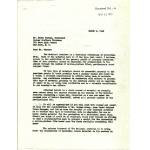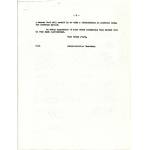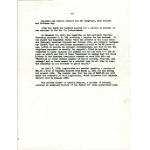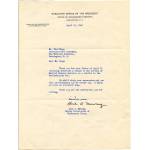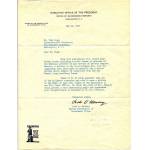File for Deborah Sampson Gannett
1942
Add to Favorites:
Add all page(s) of this document to activity:

Add only page 1 to activity:
Add only page 2 to activity:
Add only page 3 to activity:
Add only page 4 to activity:
Add only page 5 to activity:
Add only page 6 to activity:
During the American Revolution, Deborah Sampson disguised herself as a man and enlisted, under the name of Robert Shurtleff, in the Continental Army under the Fourth Massachusetts Regiment. She fought in several battles before her true identity was discovered following an injury. She was honorably discharged in 1783.
Sampson returned to Massachusetts, married Benjamin Gannett, had children, and ran a small farm. She petitioned the state of Massachusetts for back pay for her service in the army, and later the United States Congress for a pension. Paul Revere wrote in on her behalf. In 1809, after 20 years of petitioning the federal government, she received a disability pension of four dollars per month.
In 1942, Thad Page, Administrative Secretary of The National Archives (which stores pension records), wrote to Warner Brothers and the Office of the Coordinator of Government Films. Page suggested that Deborah Sampson's story would make a good subject for a patriotic film during World War II, and could encourage women to serve in the Women's Army Auxiliary Corps (WAC). He included a resume of Sampson's service in the Continental Army based on her pension file.
Sampson returned to Massachusetts, married Benjamin Gannett, had children, and ran a small farm. She petitioned the state of Massachusetts for back pay for her service in the army, and later the United States Congress for a pension. Paul Revere wrote in on her behalf. In 1809, after 20 years of petitioning the federal government, she received a disability pension of four dollars per month.
In 1942, Thad Page, Administrative Secretary of The National Archives (which stores pension records), wrote to Warner Brothers and the Office of the Coordinator of Government Films. Page suggested that Deborah Sampson's story would make a good subject for a patriotic film during World War II, and could encourage women to serve in the Women's Army Auxiliary Corps (WAC). He included a resume of Sampson's service in the Continental Army based on her pension file.
This primary source comes from the Records of the National Archives and Records Administration.
National Archives Identifier: 18526058
Full Citation: Deborah Sampson Gannett [Female Soldier of Revolutionary War]; 1942; Office Files of Thad Page, 1935 - 1947; Records of the National Archives and Records Administration, Record Group 64; National Archives at College Park, College Park, MD. [Online Version, https://www.docsteach.org/documents/document/deborah-sampson, April 26, 2024]Rights: Public Domain, Free of Known Copyright Restrictions. Learn more on our privacy and legal page.



